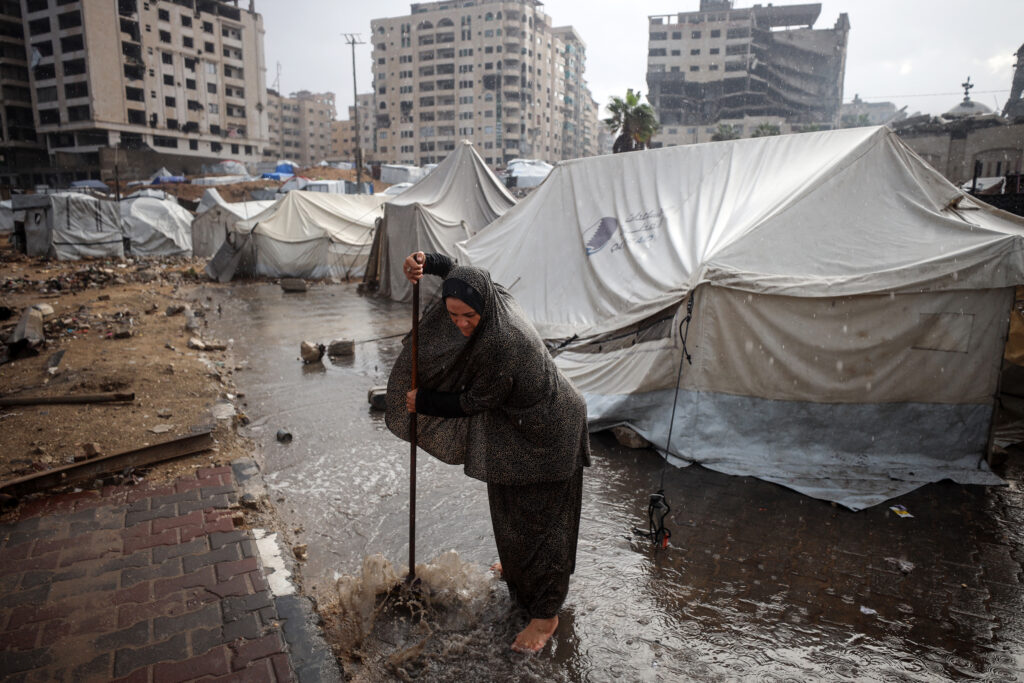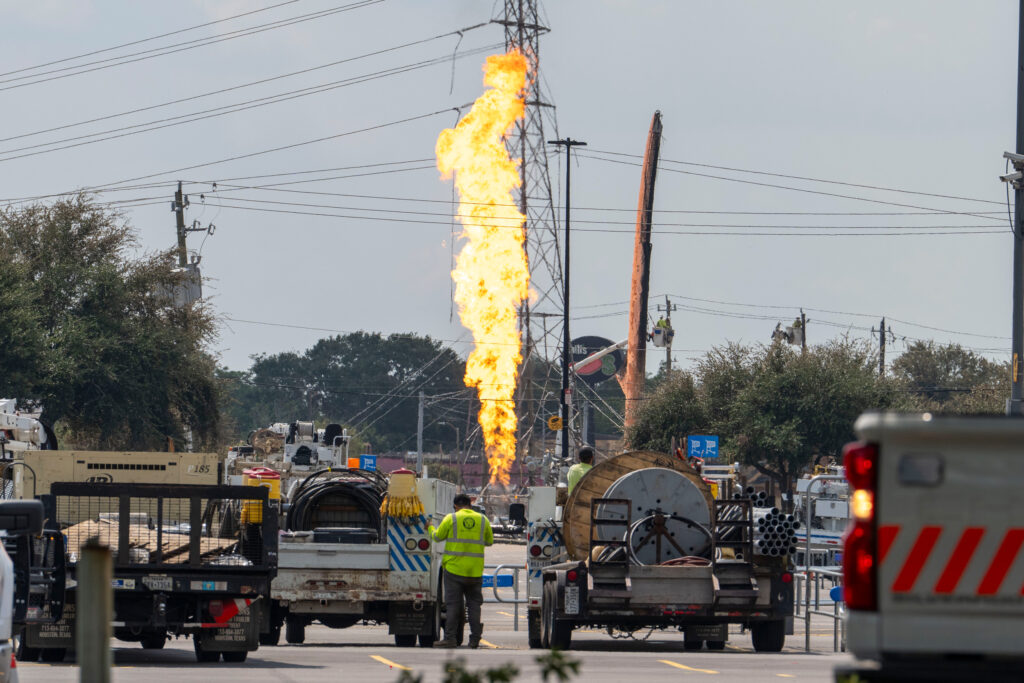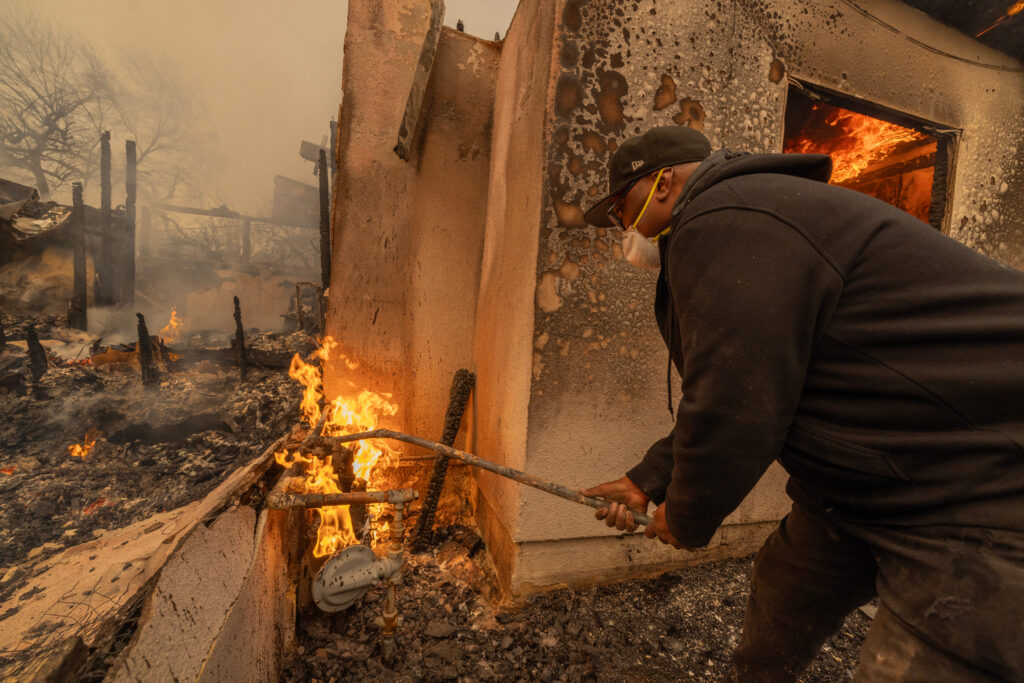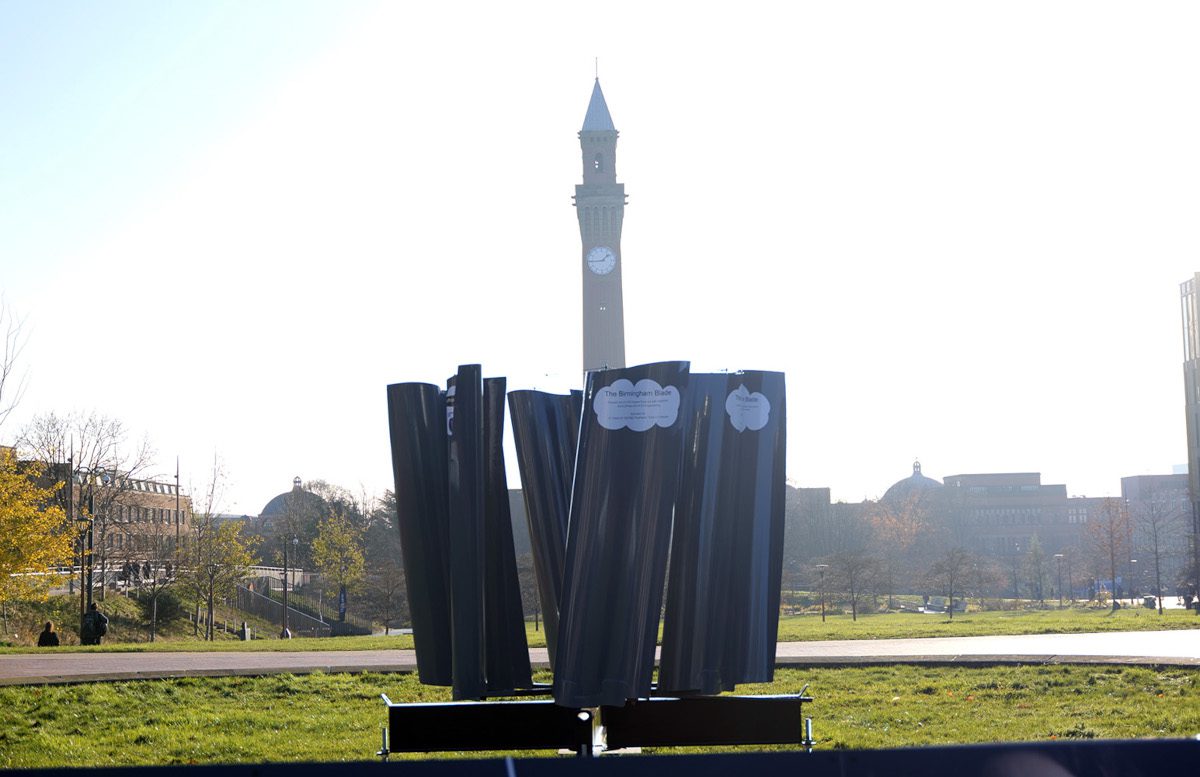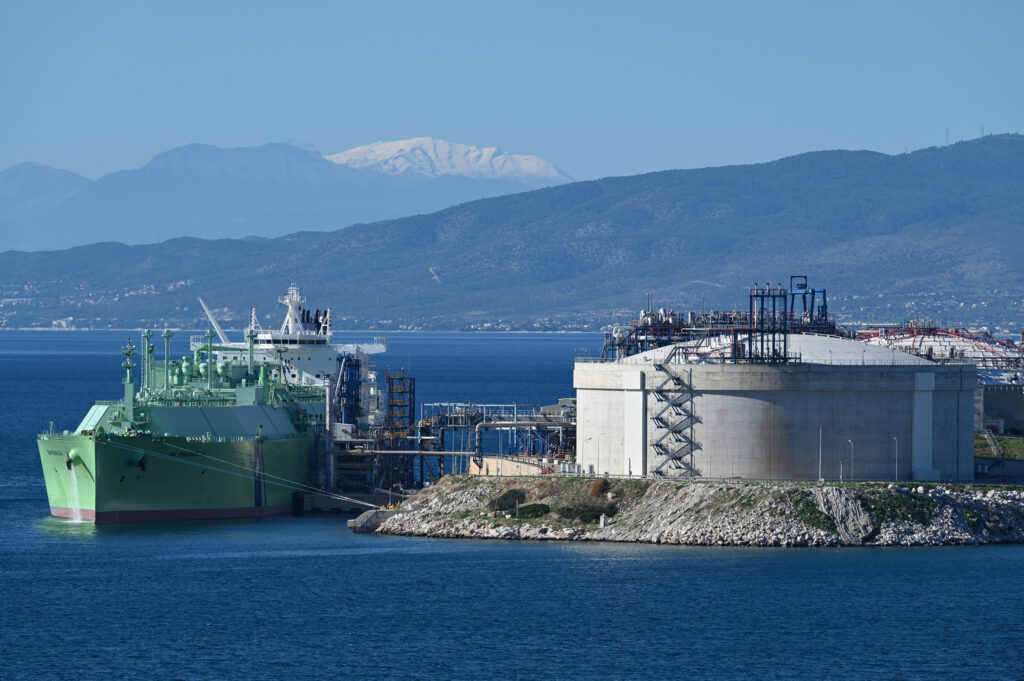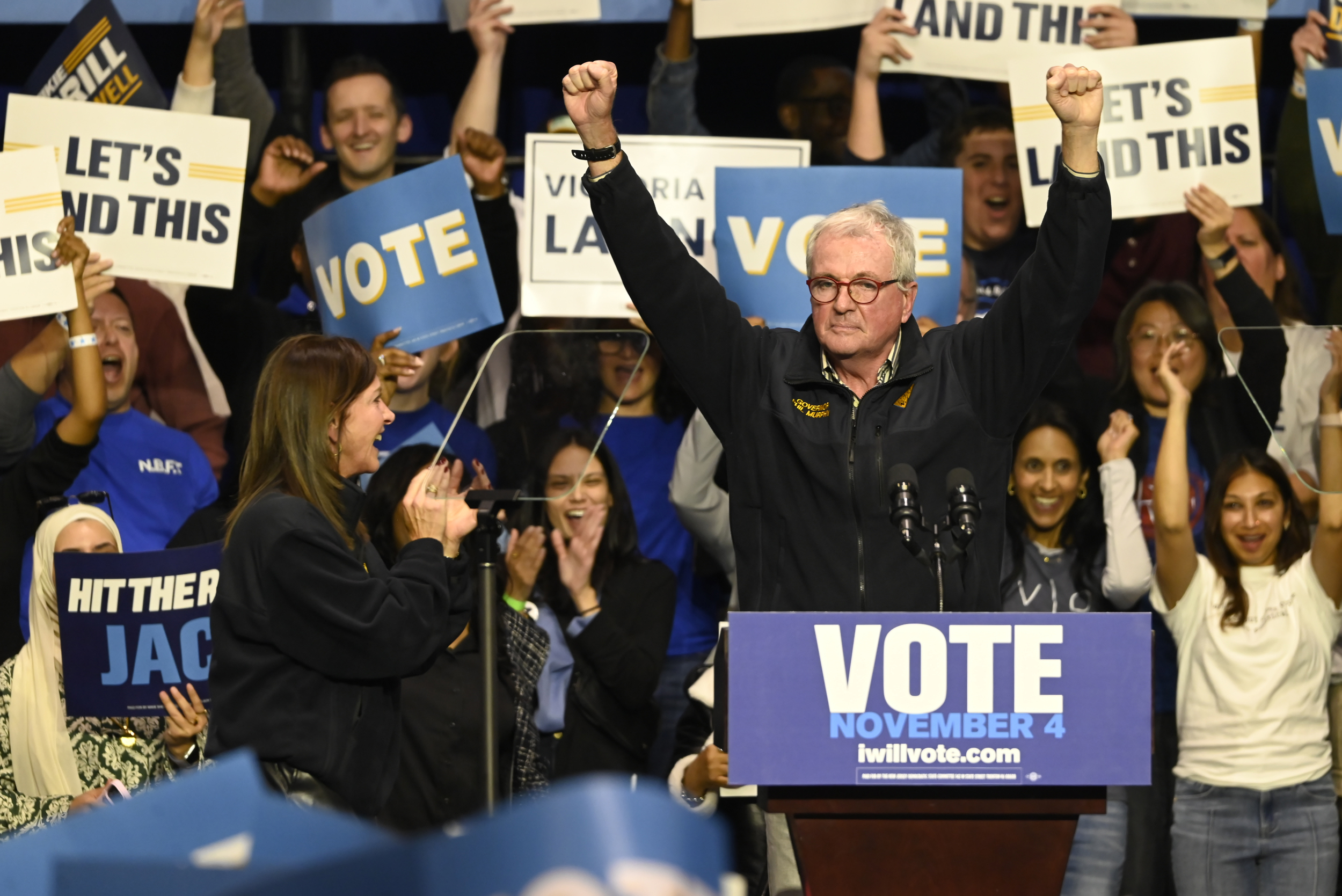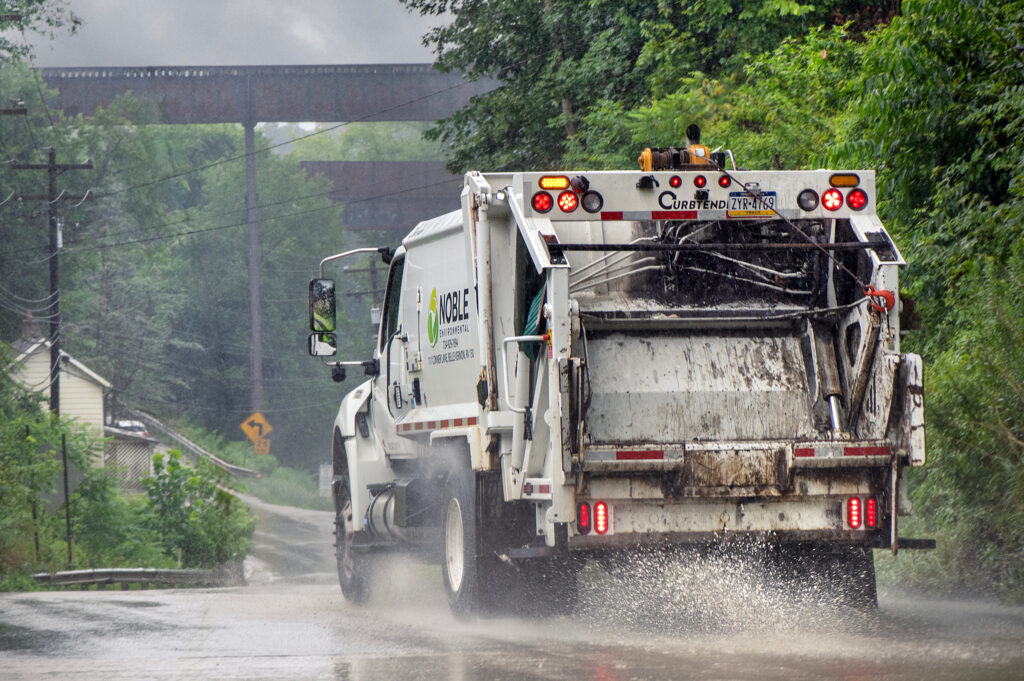On a frigid, gray morning this month, a half-dozen community advocates stood on a street corner in the South Bronx, struggling to be heard over the roar of heavy trucks. New York had recently begun charging vehicles to enter the city’s central business district, becoming the first in the nation to try to reduce traffic with a congestion pricing program.
Yet while the tolls are expected to speed commutes and help improve air quality in the region, they are also projected to worsen traffic and pollution in a handful of neighborhoods, including the South Bronx, one of the city’s poorest.
“We are inundated with traffic,” said Mychal Johnson, co-founder of South Bronx Unite, a community advocacy group that was part of the environmental justice advisory group for the congestion pricing program.

One block south of where Johnson stood is a waste transfer facility, the destination of many of the trucks driving behind him. One block north is the six-lane Major Deegan Expressway, while Bruckner Boulevard, a heavily traveled route into Manhattan, lay in between. Nestled around these are a public housing project, several new residential high-rises and a charter high school built to serve 1,300 students.
On Jan. 5, New York’s Metropolitan Transit Authority (MTA) began charging vehicles that drive into Manhattan below 60th Street. The program should increase train and bus ridership and generate billions of dollars in revenue for public transportation. But it is also expected to divert some traffic around Manhattan, leading to more vehicles rumbling through parts of the Bronx, Staten Island and Northern New Jersey.
In the neighborhood where Johnson spoke, 95 percent of residents are Hispanic or Black, according to data compiled by New York University’s Furman Center. One-third live in poverty. Across the Bronx, one in five people have asthma—the highest rate in the city’s five boroughs—while the South Bronx has the highest rates of respiratory hospitalizations related to air pollution, according to city data.
South Bronx Unite held the press conference to highlight the disproportionate impacts of congestion pricing on the neighborhood. A nurse from a hospital spoke about treating asthma patients. A parent detailed the psychological, educational and financial impacts when kids miss school due to chronic asthma attacks, forcing parents to miss work, too. A community gardener displayed his portable nebulizer, which he uses to treat symptoms of asthma and chronic obstructive pulmonary disease.


An associate professor of environmental health sciences at Columbia University spoke about a partnership with South Bronx Unite to monitor air quality with a network of sensors. Early data showed stark comparisons with a wealthy neighborhood in the Northern Bronx.
Johnson lamented that his organization should feel the need to embark on such a monitoring project, and he stressed that the group was not opposed to the plan to charge drivers for entering the city center.
“We are for reducing congestion,” Johnson said as more trucks drove behind him. “We just can’t be the shoulder-bearers of when they reduce it at other locations. Our community is suffering.”
Broadly speaking, many environmental advocates and planners praised New York’s congestion charging as a major victory. City and state leaders had been trying to implement a program for nearly two decades, and finally reached agreement to do so in 2019. Last year, New York Gov. Kathy Hochul suspended the plan shortly before it was to begin, only to revive a new version with lower rates after the election. President Donald Trump, a native New Yorker, has opposed congestion pricing and pledged to block it.
We’re hiring!
Please take a look at the new openings in our newsroom.
See jobs
New York has some of the nation’s worst traffic. And while air quality has improved over the past decades, levels of some pollutants remain high, especially in central and lower Manhattan.
The MTA’s environmental assessment said congestion pricing would increase worker productivity, lower the cost of making deliveries and help emergency vehicles reach their destinations more quickly, by speeding traffic. The assessment projected that levels of some pollutants like fine particulate matter should drop by more than 10 percent in the area covered by tolls, and incrementally region-wide.
Yet the environmental assessment acknowledged that not all areas would benefit, and that some of these burdens would fall on environmental justice communities, poor neighborhoods that already have bad air quality or pollution-related health problems.
To counter these disproportionate impacts, the MTA is allocating $100 million for mitigation in affected neighborhoods to install air purifiers in schools, plant roadside vegetation and take other measures. In the Bronx, which will receive 72 percent of the funds, the agency will also create an asthma treatment center and replace diesel refrigeration units with cleaner alternatives at a large food distribution center that is a source of heavy truck traffic.


The MTA declined to make anyone available for an interview for this article. Instead, a spokesperson pointed to comments by the authority’s chief executive, Janno Lieber, at a recent press conference and during a local radio show, when he touted the spending in the Bronx.
“We’re making the big investments that more than offset any hypothetical impact from truck traffic in the Bronx that’s a result of congestion pricing,” Lieber said on WNYC’s Brian Lehrer Show.
Hochul’s office referred questions to the MTA.
Johnson said his group was not satisfied with the MTA’s response, and called the asthma center funding “insulting.”
“If they know that problem is already pre-existing, mitigation after the fact is not helpful,” Johnson said.
In an interview after the press conference, Johnson said he had spoken with the MTA as the agency was developing congestion pricing.
“We told them we don’t want one more truck,” Johnson said. “I said, ‘Is it fair to ask our children to have to ingest the fumes from another truck when they already are impacted so heavily?’” He added, “They had no response. How do you respond?”
The group dispersed quickly after the press conference, seeking warmer and quieter spots. The trucks kept roaring by.
About This Story
Perhaps you noticed: This story, like all the news we publish, is free to read. That’s because Inside Climate News is a 501c3 nonprofit organization. We do not charge a subscription fee, lock our news behind a paywall, or clutter our website with ads. We make our news on climate and the environment freely available to you and anyone who wants it.
That’s not all. We also share our news for free with scores of other media organizations around the country. Many of them can’t afford to do environmental journalism of their own. We’ve built bureaus from coast to coast to report local stories, collaborate with local newsrooms and co-publish articles so that this vital work is shared as widely as possible.
Two of us launched ICN in 2007. Six years later we earned a Pulitzer Prize for National Reporting, and now we run the oldest and largest dedicated climate newsroom in the nation. We tell the story in all its complexity. We hold polluters accountable. We expose environmental injustice. We debunk misinformation. We scrutinize solutions and inspire action.
Donations from readers like you fund every aspect of what we do. If you don’t already, will you support our ongoing work, our reporting on the biggest crisis facing our planet, and help us reach even more readers in more places?
Please take a moment to make a tax-deductible donation. Every one of them makes a difference.
Thank you,






